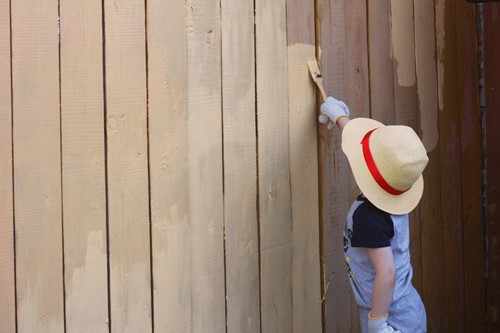
Whoever said wood fences age gracefully, either completely misunderstand the term ‘ageing gracefully’ or was a wood fence salesman!
As with everything else, and all things ‘wood’, there is an ageing process that over time can completely destroy your fence and make it completely unsalvageable or has the potential to be refreshed and restored. Let’s take a look at the options and process for determining salvageability!
As with most things universal, start with a comprehensive visual fence inspection. Even bring along an old tall but dull screw driver for poking. Take some time to do a walk around and preview. Leave chalk marks on questionable areas that appear unsalvageable. Then poke at the questionable areas long the posts, railings to see what is still firmly planted or may have the beginnings of dry rot. Just leave a mark with chalk to remember to return later to replace.
Once the ‘at risk areas’ have been identified. The next steps is to do a more comprehensive inspection cleaning off the panels of dirt, mold, and tree or polin sap. After the rotted portions are identified, replace the sectionals as need. Most fences are modular. So replacement parts and installation becomes clear.
The next step includes cleaning off the surface mess for closer inspection and treatment. Using either a garden hose and cleaner or even a low pressure power washer to proceed more quickly is a great way to prep the fence. Though with water, you may have to wait a couple days to dry.
In some cases it might even be necessary to use a brush to get surface area clean for treatment. Personally, I would use a solution of water and white vinegar before I tried bleach. Vinegar is cheap, effective, and a great washer/degreaser/mold inhibitor. And vinegar is far less damaging to wood than bleach..
You're last and final stage after getting a clean and fresh surface to work with is a sealer. Some people prefer a fresh coat of paint. Others will recommend any off the shelve stain for many reason. Paint may change the color and be just as good a sealer. But a stain offers many shades while being far more organic to the natural wood texture and color. Just remember to confirm whether paint of stain, that either is specific to outdoors and wood applications. Many of these products are made especially for wood fences. Interestingly enough, you don’t need a contractor
